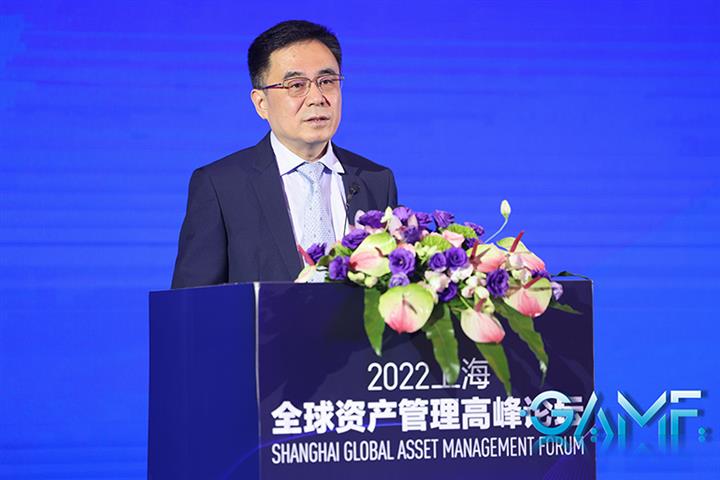 China’s Asset Management Sector Shows New High-Quality Growth Trend, Shanghai CBIRC Head Says
China’s Asset Management Sector Shows New High-Quality Growth Trend, Shanghai CBIRC Head Says(Yicai Global) Nov. 30 -- China’s more than CNY130 trillion (USD18.2 trillion) asset management sector is showing a new momentum for high-quality development, the Shanghai branch head of the China Banking and Insurance Regulatory Commission Shanghai said.
The CBIRC’s Shanghai office will spur the sector’s development, while preventing risks, Wang Junshou said yesterday at the 2022 Shanghai Global Asset Management Forum, co-hosted by Yicai Media Group and the Bank of China.
As a hub for China’s financial opening-up, Shanghai has leveraged organizations, talent, and technologies to gather together more than 4,600 types of institutional asset managers, handling about a quarter of the country’s total assets, he said.
The joint-venture wealth management firms set up by the likes of BlackRock, Goldman Sachs, Schroder Investment Management, Amundi, and BNP Paribas with large Chinese banks are all based in Shanghai. Bank of Shanghai’s asset management unit and seven franchisees will also start operations this year, helping Shanghai develop into an international financial hub, Wang added.
He would like to see Chinese-funded wealth management firms adopt a “deep plowing” strategy, targeting local clients so that foreign wealth managers can focus more on localization and professionalization of businesses and JV wealth managers can stick to their positioning to achieve differentiated development and reach the target of “one plus one equals more than two.”
It is also important to adhere to the principle that “sellers should fulfill their duties, while buyers should also be responsible for their deeds” to effectively safeguard the legitimate rights and interests of financial consumers, Wang noted.
Regulators and asset managers must effectively hedge and manage potential risks brought about by uncertainties, smooth market fluctuations caused by sudden events, and maintain and maximize the value of assets to the greatest extent, especially in the context of increasing global economic uncertainty, Wang said.
“Asset management firms also need to enhance their capabilities in managing and controlling the risks relevant to the market, liquidity, and reputation,” Wang added.
“They also need to seek financial technology-driven innovations in the risk management model to enhance the systematic and technology-related capabilities in risk prevention, perfect guarantees for system security, and effectively fend off various types of risks via the empowerment by technologies,” he said.
Editors: Liao Shumin, Futura Costaglione